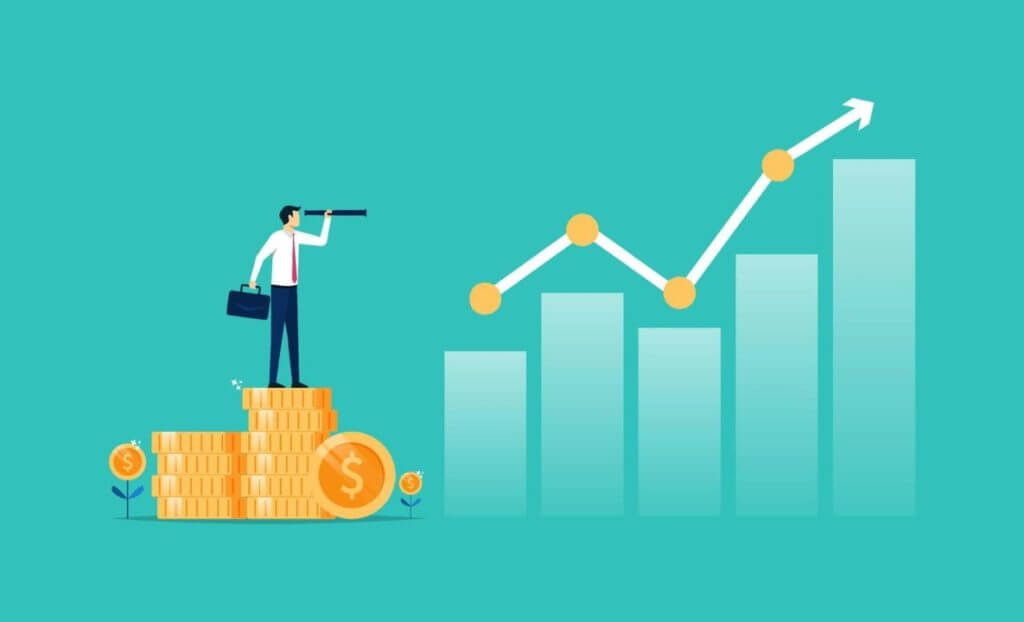In the dynamic world of business, planning is crucial for sustained growth and success. Two essential tools that businesses use to plan effectively are budgeting and forecasting. These processes are vital in helping businesses allocate resources, set realistic goals, and anticipate future financial performance. In this blog, we will delve into the intricacies of budgeting and forecasting, their importance, and how they can be effectively implemented to foster business growth.
Understanding Budgeting
Budgeting is the process of creating a financial plan for a specified period, usually a year. This plan includes projected revenues, expenses, and capital allocations. The primary objective of budgeting is to ensure that a business operates within its means, prioritizes spending, and achieves its financial goals.

Key Components of a Budget
- Revenue Projections: Estimating future sales based on historical data, market trends, and business strategies.
- Expense Estimates: Categorizing and forecasting all anticipated costs, including fixed, variable, and semi-variable expenses.
- Capital Expenditures: Planning for significant investments in assets like machinery, technology, or real estate.
- Cash Flow Management: Ensuring that the business has sufficient cash to meet its obligations and invest in growth opportunities.
- Contingency Plans: Setting aside funds for unexpected expenses or economic downturns.
Understanding Forecasting
Forecasting is the process of predicting future financial performance based on historical data, current market trends, and business assumptions. Unlike budgeting, which is a static plan, forecasting is dynamic and is often updated regularly to reflect changes in the business environment.
Types of Forecasting
- Short-term Forecasting: Typically covers a period of up to one year and focuses on immediate financial needs and performance.
- Medium-term Forecasting: Spans one to three years and helps in strategic planning and resource allocation.
- Long-term Forecasting: Extends beyond three years and is used for major strategic decisions and long-term investments.
The Importance of Budgeting and Forecasting
Both budgeting and forecasting are critical for business growth for several reasons:
- Financial Control: These processes help businesses manage their finances effectively, ensuring that they do not overspend and stay on track to meet their financial goals.
- Resource Allocation: By identifying where funds are needed most, businesses can allocate resources efficiently to areas that will drive growth.
- Risk Management: Budgeting and forecasting help identify potential financial risks and prepare strategies to mitigate them.
- Performance Measurement: These tools provide benchmarks against which actual performance can be measured, helping businesses to adjust their strategies as needed.
- Strategic Planning: They enable businesses to plan for the future, set realistic goals, and develop strategies to achieve them.
Steps to Effective Budgeting
Creating an effective budget involves several key steps:
- Set Clear Objectives: Define what the business aims to achieve in the budget period, such as revenue targets, cost reductions, or expansion plans.
- Gather Data: Collect historical financial data, market analysis, and input from various departments to inform the budget.
- Estimate Revenues: Project future sales based on past performance, market conditions, and growth strategies.
- Identify Expenses: List all anticipated costs, categorizing them into fixed, variable, and capital expenses.
- Develop the Budget: Compile the revenue and expense estimates into a comprehensive budget, ensuring alignment with the business objectives.
- Review and Approve: Present the budget to key stakeholders for review and approval, making adjustments as necessary.
- Monitor and Adjust: Regularly compare actual performance against the budget, making adjustments as needed to stay on track.
Steps to Effective Forecasting
Effective forecasting involves:
- Define the Purpose: Determine the specific goals of the forecast, whether for short-term cash flow management or long-term strategic planning.
- Select the Right Model: Choose an appropriate forecasting model based on the time frame and complexity of the forecast.
- Collect Data: Gather historical financial data and relevant market information.
- Make Assumptions: Develop assumptions based on current business conditions and future expectations.
- Create the Forecast: Use the data and assumptions to project future financial performance.
- Review and Adjust: Regularly update the forecast to reflect changes in the business environment and actual performance.
Integrating Budgeting and Forecasting for Business Growth
For optimal business growth, budgeting and forecasting should not be standalone processes but rather integrated into a cohesive financial planning strategy. Here’s how to achieve this integration:
- Continuous Feedback Loop: Establish a continuous feedback loop where actual performance data informs both the budget and forecast, allowing for real-time adjustments.
- Collaborative Approach: Foster collaboration between departments to ensure that both budgeting and forecasting reflect the needs and insights of the entire organization.
- Technology Utilization: Leverage financial planning software and AI forecasting tools to streamline the processes, improve accuracy, and facilitate real-time updates.
- Scenario Analysis: Conduct scenario analysis to evaluate the impact of different assumptions and potential changes in the business environment.
- Alignment with Strategic Goals: Ensure that both budgeting and forecasting are aligned with the company’s long-term strategic goals and objectives.
Challenges and Best Practices
While budgeting and forecasting are essential, they come with challenges. Here are some common challenges and best practices to overcome them:
Challenges
- Data Accuracy: Inaccurate data can lead to flawed budgets and forecasts.
- Market Volatility: Rapid changes in the market can render forecasts obsolete.
- Resource Constraints: Limited resources can make it challenging to create detailed and accurate budgets and forecasts.
- Stakeholder Buy-In: Gaining buy-in from all stakeholders can be difficult, especially when cuts or reallocations are necessary.
Best Practices
- Use Historical Data Wisely: While historical data is valuable, it should be supplemented with current market trends and insights.
- Regular Updates: Update budgets and forecasts regularly to reflect new information and changing conditions.
- Involve Key Stakeholders: Engage key stakeholders throughout the process to ensure accuracy and buy-in.
- Train Staff: Provide training to staff involved in budgeting and forecasting to enhance their skills and understanding.
- Adopt a Flexible Approach: Be prepared to adjust budgets and forecasts as needed to respond to unexpected changes.
Bonus Section: R&D Tax Credit Software for Business Growth
In addition to budgeting and forecasting, businesses engaged in research and development (R&D) can significantly benefit from leveraging R&D tax credit software. This technology helps companies identify, calculate, and claim tax credits for their R&D activities, which can be a substantial financial boost.
Understanding R&D Tax Credits
R&D tax credits are government incentives designed to encourage businesses to invest in innovation. These credits can reduce a company’s tax liability, freeing up funds that can be reinvested into the business. Qualifying activities often include developing new products, processes, or technologies, and improving existing ones.
The Role of R&D Tax Credit Software
R&D tax credit software streamlines the process of identifying eligible R&D activities, tracking expenses, and calculating the tax credit. This software is particularly beneficial for businesses that may not have the expertise or resources to navigate the complex R&D tax credit landscape.
Key Features of R&D Tax Credit Software
- Automated Eligibility Assessment: The software can analyze business activities and expenditures to determine which qualify for R&D tax credits.
- Expense Tracking: It helps track and categorize expenses related to R&D activities, ensuring all eligible costs are captured.
- Accurate Calculations: The software uses current tax laws and regulations to accurately calculate the potential tax credit.
- Compliance Support: It provides documentation and reports required for tax filings, ensuring compliance with government regulations.
- Integration with Financial Systems: The software can integrate with existing financial and accounting systems, making it easier to compile necessary data.
Benefits of Using R&D Tax Credit Software
- Maximized Tax Credits: By accurately identifying all qualifying activities and expenses, the software helps businesses maximize their R&D tax credits.
- Cost Savings: Automating the process reduces the need for expensive external consultants and minimizes the risk of human error.
- Time Efficiency: The software speeds up the process of claiming tax credits, allowing businesses to focus on their core activities.
- Improved Cash Flow: Receiving R&D tax credits improves cash flow, providing additional funds for further investment in innovation and growth.
- Strategic Planning: Understanding the financial benefits of R&D activities helps businesses plan and allocate resources more effectively.
Choosing the Right R&D Tax Credit Software
When selecting R&D tax credit software, consider the following factors:
- User-Friendliness: The software should be easy to use, even for those without extensive tax or accounting knowledge.
- Customization: It should allow for customization to fit the specific needs and structure of your business.
- Integration Capabilities: Ensure it can integrate seamlessly with your existing financial and accounting systems.
- Support and Training: Look for software that offers robust customer support and training resources.
- Reputation and Reviews: Research the software’s reputation and read reviews from other users to gauge its effectiveness and reliability.
Incorporating R&D tax credit software into your financial planning toolkit can provide substantial benefits, complementing your budgeting and forecasting efforts. By maximizing your R&D tax credits, you can enhance your business’s financial health, invest more in innovation, and drive long-term growth. As businesses continue to navigate the complexities of financial planning and tax regulations, leveraging advanced software solutions can offer a strategic advantage, ensuring that you capitalize on all available opportunities to support your growth objectives.
Conclusion
Budgeting and forecasting are indispensable tools for any business aiming for growth. By providing a roadmap for financial management and future planning, they help businesses navigate uncertainties, allocate resources effectively, and achieve their strategic goals. Implementing these processes with a focus on accuracy, collaboration, and flexibility can significantly enhance a business’s ability to grow and thrive in a competitive market. Whether you are a startup or an established enterprise, investing time and resources into robust budgeting and forecasting practices is a strategic move that can yield substantial long-term benefits.

